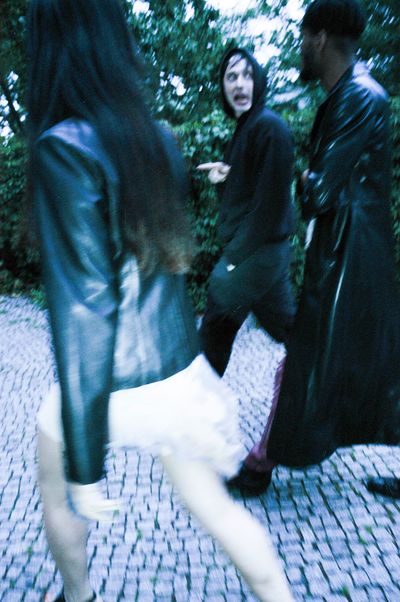Frieze Art FairThan Hussein Clark, Eloise Hawser, Tobias Kaspar, Rob Kulisek, Eva LeWitt, and Sebastian Lloyd Rees
Press release
VI, VII returns to Frieze London this Autumn.
Since opening its doors in 2012, VI, VII has participated in eight editions of Frieze Frame and Focus. The gallery is thrilled to mark its first participation in the Main section of the fair with a booth highlighting the work of six artists from its program.
The presentation features a large-scale installation by Eva LeWitt from her latest series “Hanging Spheres.” Constructed with black rubber and steel beads across five individual works, this modular piece features vertical elements, that hang loose while structured.
Rob Kulisek’s two large-scale photographs round out the series pride (rave), the first two parts of which have been exhibited at the gallery and as recently as June Art Fair in Basel. The series, which pictures an illegal rave that the artist staged during the height of the Covid-19 lockdown in Berlin was photographed on a single evening, in both his studio and Tiergarden park. It touches on the political implications of the lockdown for LGBTQ and other at risk groups for whom nightlife is a lifeline.
In Untitled, 2019 – 2021 artist Eloise Hawser has retrieved unburnt materials from the waste cycle which regularly sees trash burned at plants across the UK. Among the items she has retrieved from this cycle are mattress coils, Here, the discarded coils have been partly replicated by hand and are pressed between glass, removed from their intimate, supporting role in everyday life.
This work relates to the artist’s participation in The 16th Istanbul Biennial curated by Nicolas Bourriaud, for which her installation examined material, perceptual and affective aspects of waste manipulation and cycles.
Building upon the series’ “Reflector Painting” (2015-2017) and the “Japan Collection” of enlarged embroidery photos (2018-2020) the gallery exhibits a painting from “Personal Shopper,” the third body of work that Tobias Kaspar has made involving the infrastructure of Swiss Haute Couture textiles.
The series addresses issues of art, life and commerce. The artist composes outfits on online retail stores such as farfetch, ssense, moda operandi, my theresa, mister porter or yoox. Screenshots from these wish-lists and shopping bags are then enlarged and inkjet printed onto canvas. On top of this Kaspar then often silkscreens patterns using screens previously owned by Chanel, Dior, Hermes and other high end fashion brands which print at the same silkscreen studio as the artist. A change of economy or expiration of copyrights make these productions possible. The cold and capitalist inkjet print sometimes get a 6-color handmad, crafty silkscreen print on top – juxtaposing industrial vs. hand made production. Printing “mistakes” are often visible yet the artists hand and painterly gesture are not present. Kaspar is interested in how one can appropriate images, both artistically but also in regards of copyrights and ownership. From Than Hussein Clark, five works from his exhibition at CRAC Occitanie in Séte, France are displayed. The series entitled “The Replacement Who Cried Replacement” consists of twenty photographic collages enhanced with ink and text from a poem by James Loop. Pages from a 2019 book entitled “The Homes and Gardens of Tangier” are combined with the photo book “Autoportraits” by writer Renaud Camus who was closely connected with the Socialist Party in the 1970s and 1980s, and was also one of the voices of the gay community in the 1970s, contributing to the magazine Le Gai Pied before shifting towards more extreme right-wing stances and devising the xenophobic “Great Replacement” theory, claiming there is a deliberate process underway to replace the European population with a non-European population. Using the photomontage as a critical method, in the tradition of the Dadaists and the Beat Generation’s “cut-up”, the artist turns the threat upside-down in a grotesque caricature. Through a play of cut-outs, collage and reassembly, Than Hussein Clark replaces “the replacement” and recombines spaces and places.
A music stand (Score for Basso Profundo) presents a text published in 1971, here referred to as a “score” that is able to be sung. The text
evokes sexual freedom, whether through the Manifesto of the 343 published by the Nouvel Observateur, its reuse by the Front de Libération Homosexuel in issue no. 12 of the magazine Tout !, or the republication of the Report Against Normality by the Front Homosexuel d’Action Révolutionnaire. Formatted and bound by the artist, the documents become clues for understanding a critical perspective, at the intersection between questions of gender, class,
sexuality and race. Finally, in two works framed in mirror polished aluminum, (“The Poet James Loop and the Artist Benjamin Edwin Slinger Enact the Mediterranean Crossing Reversal” and “The Artist Jordan Derrien Encounters the Replacement Who Cried Replacement”) two journeys in opposite directions are recounted through two series of photographs: a first journey southward on
the boat from Sète to Tangier, and a second journey towards northern Occitanie, to Plieux, where the château of author Renaud Camus is located. The first series of photographs, accompanied by a logbook, shows James Loop’s crossing to Tangier with two of the artist’s assistants. Since his passport was outof-date, Than Hussein Clark was held at the border and could not join them.
The second series of Polaroid images recounts the journey to the area outside the château of writer Renaud Camus. At the request of the artist’s assistants, Camus wrote an inscription in his book Châteaux dedicating it to Nelson Dyar, the protagonist of Paul Bowles’ novel Let It Come Down, published in 1952, the story of the social and moral downfall of an American in Tangier.
This project is kindly supported by OCA.
Frieze London, 2021
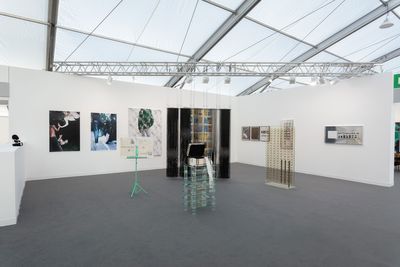
Frieze London, 2021
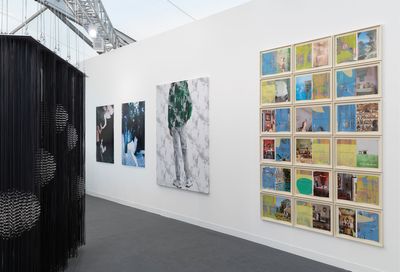
Frieze London, 2021
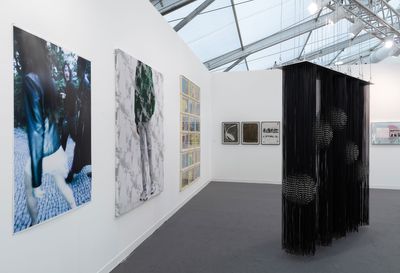
Frieze London, 2021
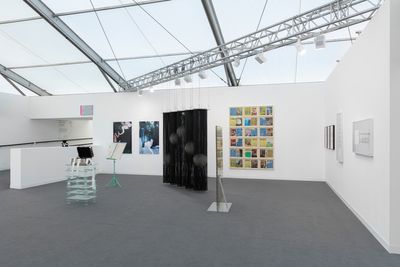
Frieze London, 2021
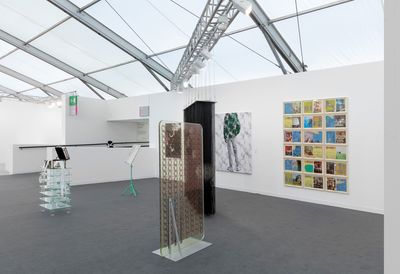
Frieze London, 2021
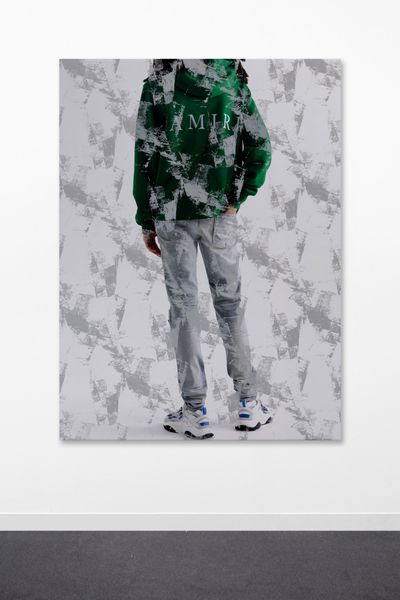
Frieze London, 2021
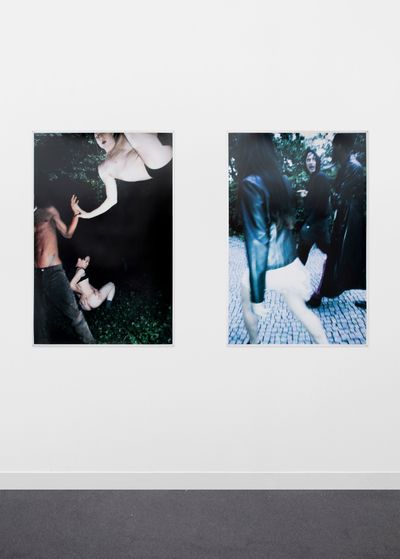
Frieze London, 2021
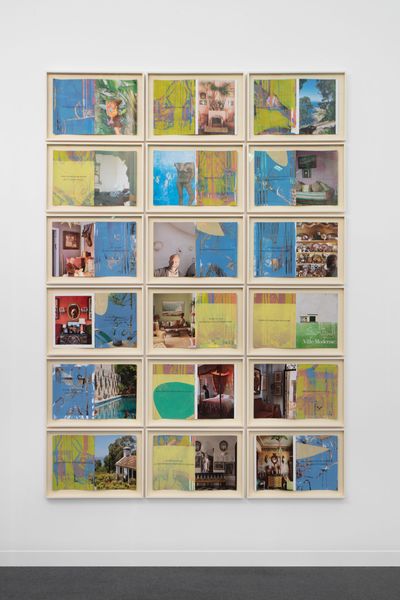
Eva LeWitt, Hanging Sphere (40), (66), (75), (56.5) and (43), 2021
Rubber and stainless steel beads
96 × 85 × 17 inches (243.84 × 215.90 × 43.18 cm)
Rubber and stainless steel beads
96 × 85 × 17 inches (243.84 × 215.90 × 43.18 cm)


Rob Kulisek, pride (rave) / sex III, 2021
Digital C-print mounted on aluminium
80 × 60 cm (31 ½ × 23 ⅝ inches)
Digital C-print mounted on aluminium
80 × 60 cm (31 ½ × 23 ⅝ inches)
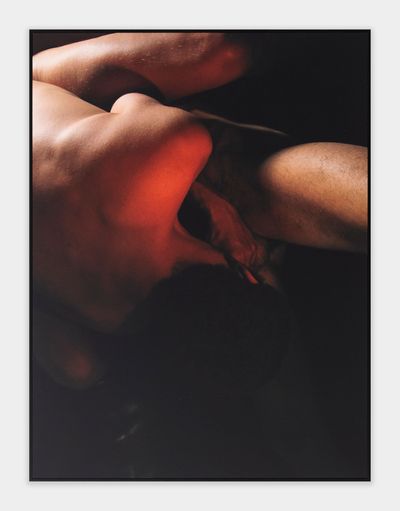

Rob Kulisek, pride (rave) / scene VII, 2021
Digital C-print mounted on aluminium
90 × 135 cm (35 ⅜ × 53 ⅛ inches)
Digital C-print mounted on aluminium
90 × 135 cm (35 ⅜ × 53 ⅛ inches)
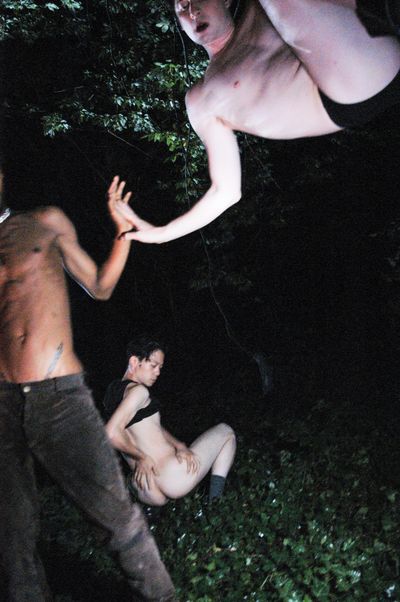

Than Hussein Clark, The Replacement Who Cried Replacement (It Isn't Known Nobody Knows), 2020
Tangier Homes pages, Camus Auto-portraits pages, ink
38 × 54.5 × 4.2 cm (15 × 21 ½ × 1 ⅝ inches)
Tangier Homes pages, Camus Auto-portraits pages, ink
38 × 54.5 × 4.2 cm (15 × 21 ½ × 1 ⅝ inches)
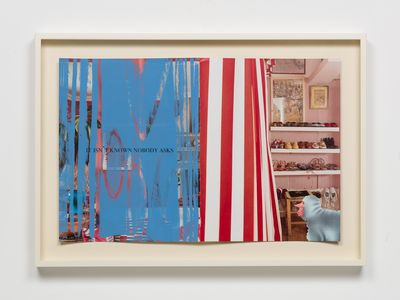

Than Hussein Clark, The Replacement Who Cried Replacement (The Pope Is Down In Africa), 2020
Tangier Homes pages, Camus Autoportraits pages, ink
38 × 54.5 × 4.2 cm (15 × 21 ½ × 1 ⅝ inches)
Tangier Homes pages, Camus Autoportraits pages, ink
38 × 54.5 × 4.2 cm (15 × 21 ½ × 1 ⅝ inches)
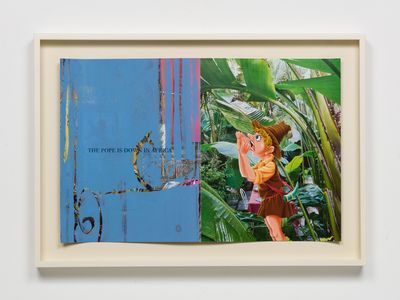

Than Hussein Clark, The Replacement Who Cried Replacement (In Bits of Castle Open Onto Light), 2020
Tangier Homes pages, Camus Autoportraits pages, ink
38 × 54.5 × 4.2 cm (15 × 21 ½ × 1 ⅝ inches)
Tangier Homes pages, Camus Autoportraits pages, ink
38 × 54.5 × 4.2 cm (15 × 21 ½ × 1 ⅝ inches)
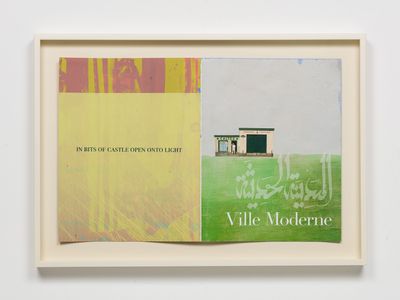

Than Hussein Clark, The Replacement who Cried Replacement (The Pope is in Tangier), 2020
Tangier Homes pages, Camus Autoportraits pages, ink
38 × 54.5 × 4.2 cm (15 × 21 ½ × 1 ⅝ inches)
Tangier Homes pages, Camus Autoportraits pages, ink
38 × 54.5 × 4.2 cm (15 × 21 ½ × 1 ⅝ inches)
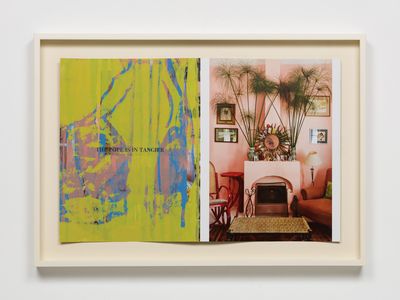

Than Hussein Clark, Receipt Lens with James Loop, 2020
Tangerine mirror box, receipt paper, postcards, drinking glasses, wax
135 × 59 × 42 cm (53 ⅛ × 23 ¼ × 16 ½ inches)
Tangerine mirror box, receipt paper, postcards, drinking glasses, wax
135 × 59 × 42 cm (53 ⅛ × 23 ¼ × 16 ½ inches)
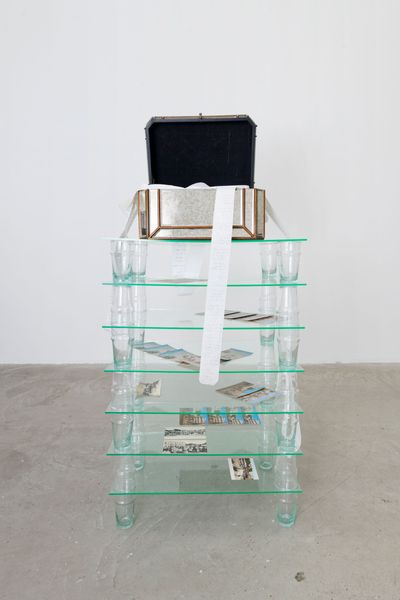

Than Hussein Clark, Receipt Lens with James Loop, 2020
Tangerine mirror box, receipt paper, postcards, drinking glasses, wax
135 × 59 × 42 cm (53 ⅛ × 23 ¼ × 16 ½ inches) (53 ⅛ × 23 ¼ × 16 ½ inches)
Tangerine mirror box, receipt paper, postcards, drinking glasses, wax
135 × 59 × 42 cm (53 ⅛ × 23 ¼ × 16 ½ inches) (53 ⅛ × 23 ¼ × 16 ½ inches)
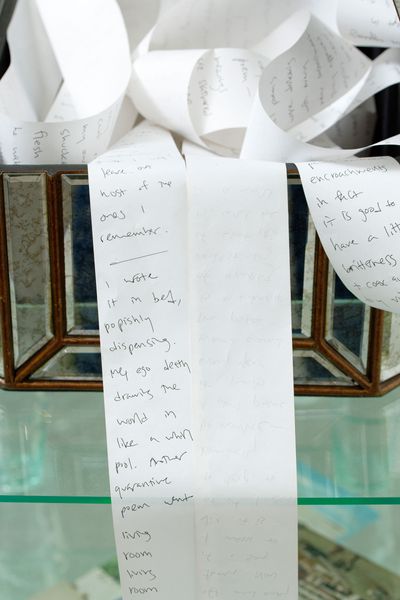

Than Hussein Clark, Score for Basso Profundo, 2020
music stand, handbound first edition copy of FHAR: Rapport contre la normalité : le Front homosexuel d'action révolutionnaire rassemble les pièces de son dossier d'accusation : simple révolte ou début d'une révolution, Symptome 3, Editions ChampLibre
150 × 50 × 28 cm (59 × 19 ⅝ × 11 inches)
music stand, handbound first edition copy of FHAR: Rapport contre la normalité : le Front homosexuel d'action révolutionnaire rassemble les pièces de son dossier d'accusation : simple révolte ou début d'une révolution, Symptome 3, Editions ChampLibre
150 × 50 × 28 cm (59 × 19 ⅝ × 11 inches)
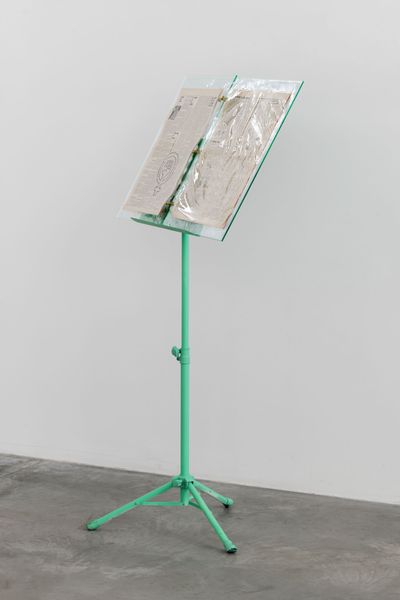

Than Hussein Clark, The Artist Jordan Derrien Encounters the Replacement Who Cried Replacement, 2020
Polaroid prints, signed page from Renaud Camus's Châteaux monograph, mirror polished aluminium
60 × 120 cm (23 ⅝ × 47 ¼ inches)
Polaroid prints, signed page from Renaud Camus's Châteaux monograph, mirror polished aluminium
60 × 120 cm (23 ⅝ × 47 ¼ inches)
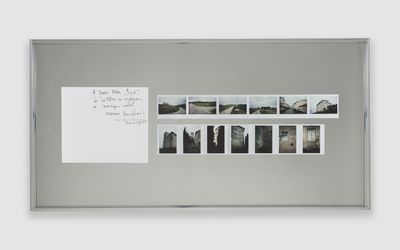

Than Hussein Clark, The Poet James Loop and the Artist Benjamin Edwin Slinger Enact the Mediterranean Crossing Reversal, 2020
Photographic prints, notebook, mirror polished aluminium
120 × 60 cm (47 ¼ × 23 ⅝ inches)
Photographic prints, notebook, mirror polished aluminium
120 × 60 cm (47 ¼ × 23 ⅝ inches)
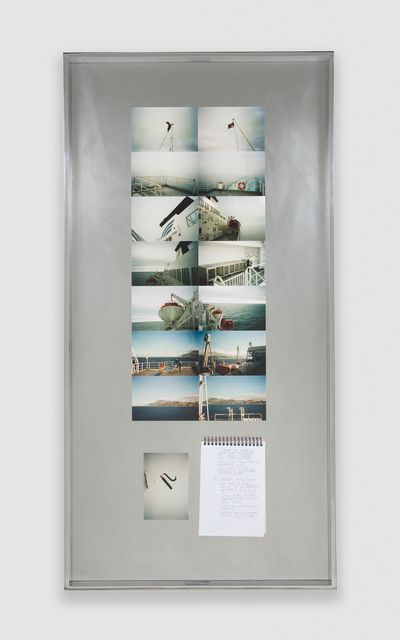

Than Hussein Clark, The Replacement who Cried Replacement (Bleak White Lizard Against Old Stone), 2020
Tangier Homes pages, Camus Autoportraits pages, ink
38 × 54.5 cm (15 × 21 ½ inches)
Tangier Homes pages, Camus Autoportraits pages, ink
38 × 54.5 cm (15 × 21 ½ inches)
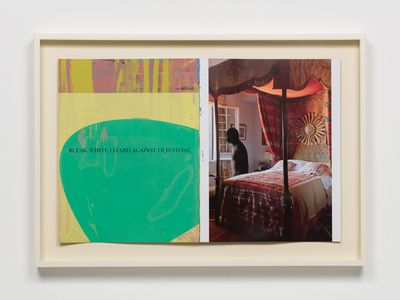

Rob Kulisek, pride (rave) / scene VIII, 2021
Digital C-print mounted on aluminium
90 × 135 cm (35 ⅜ × 53 ⅛ inches)
Digital C-print mounted on aluminium
90 × 135 cm (35 ⅜ × 53 ⅛ inches)
